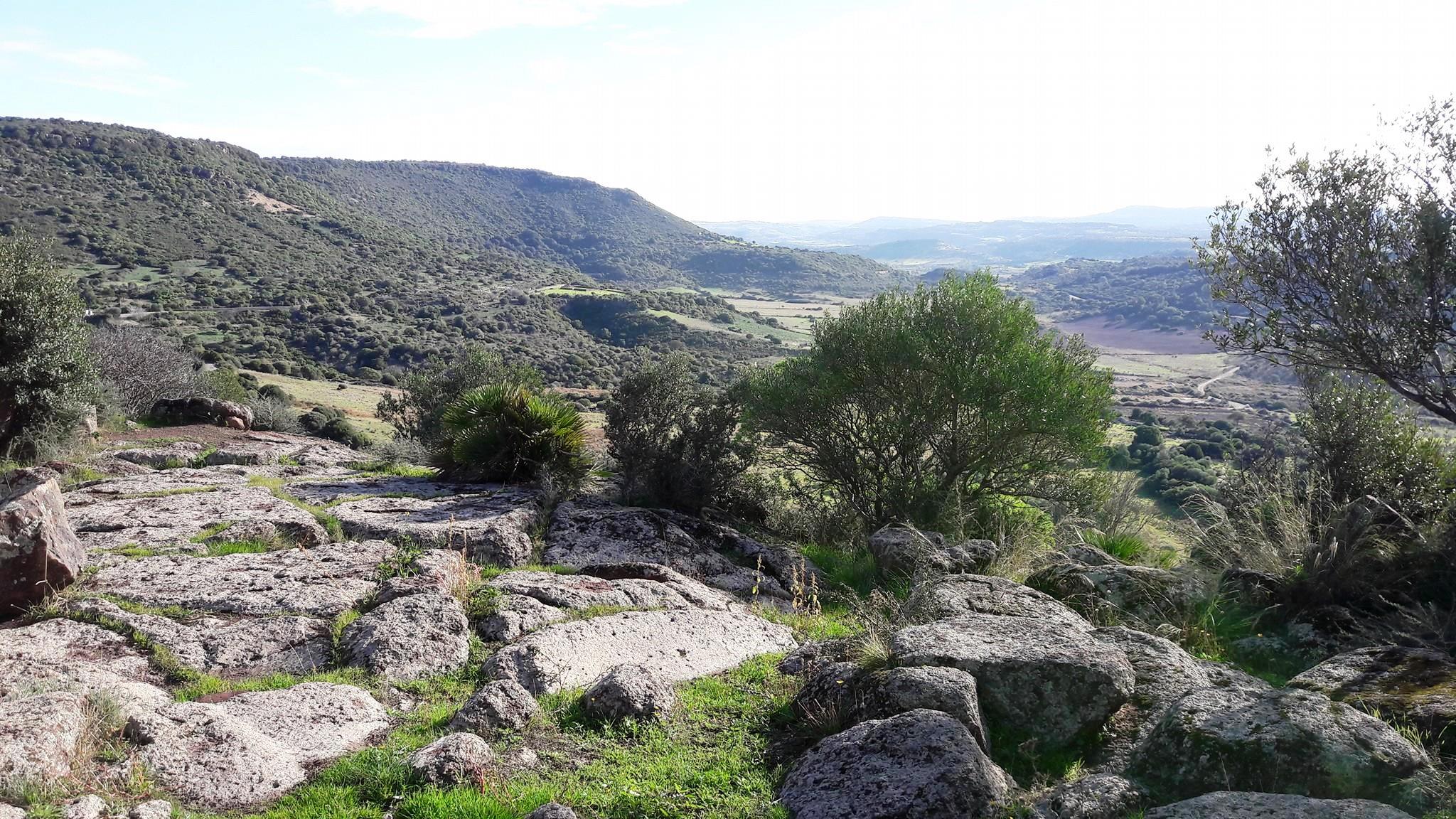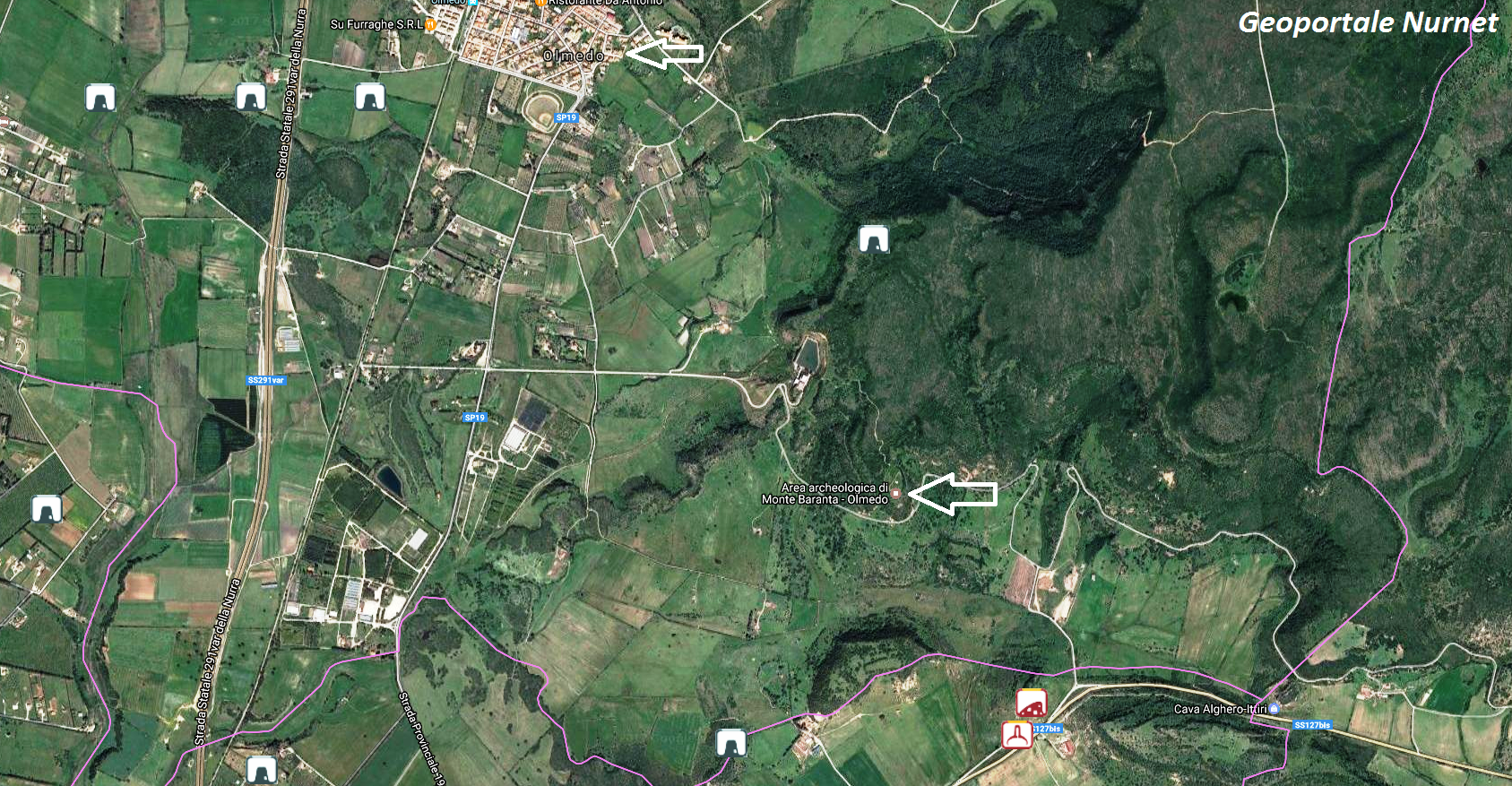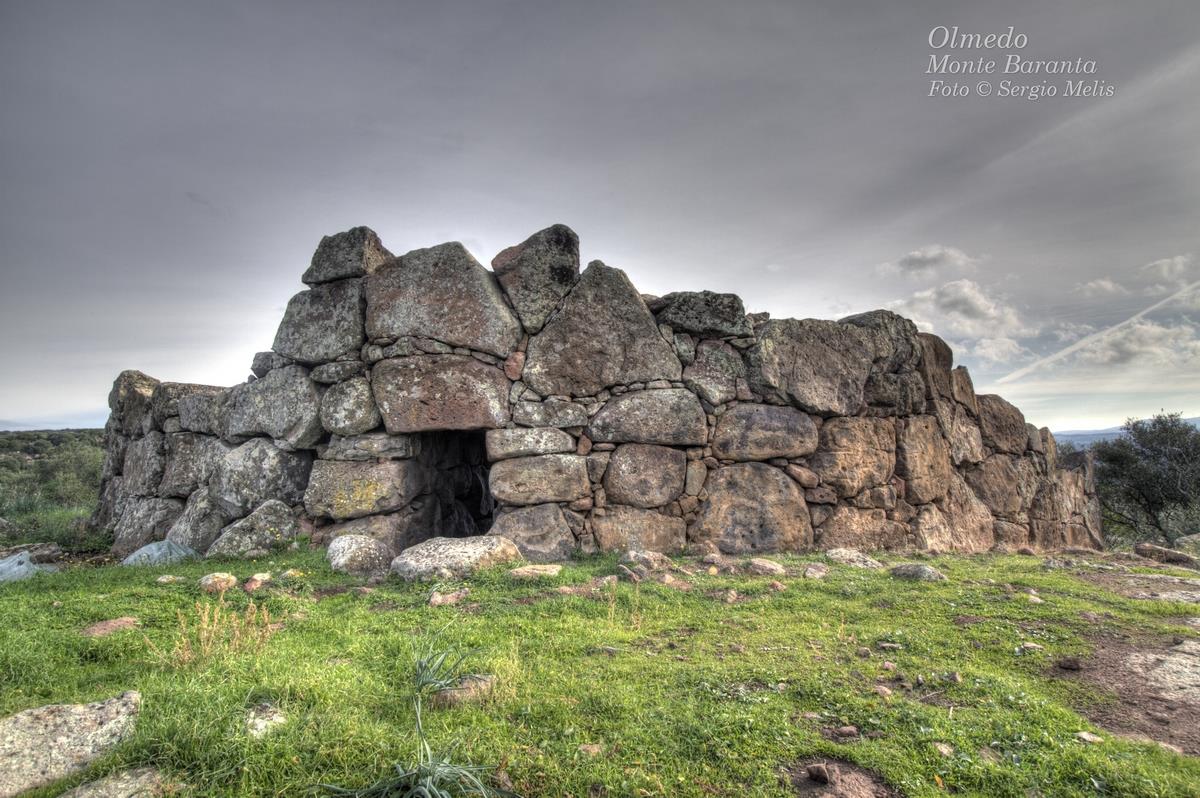Regarding the nuragic complex of Monte Baranta in Olmedo, Alberto Moravetti wrote among other things that <<…The spread of megalithic fortifications is not an exclusive phenomenon of Sardinia, but is widespread throughout the Mediterranean and Atlantic Europe. In fact, starting from the final phases of the Neolithic and throughout the Copper Age – likely testifying to the widespread state of conflict following the discovery of metals – there is a felt need for defense that is evidenced, to limit ourselves to the most notable examples, in the fortifications of the Iberian Peninsula (Los Millares, Zambujal, Villanova Sao Pedro), in the fortified villages of France (Chateau Lebous, Boussargues, Montijau, Cambous, etc.), etc. The complex of Monte Baranta, so perfectly defined in its civil, “military,” and religious aspects (the funerary aspect is currently lacking) seems to show, more than any other, the sense of insecurity that drove the people of Monte Claro to occasionally settle on heights and to integrate natural defenses with powerful megalithic structures, encompassing vast surfaces and linked to criteria of dynamic defense. And while it connects to previous ideologies (menhirs and megalithic circles of the Ozieri culture), it seems to herald, for the topographic choice model, for the strategic vision of territorial control and for some architectural solutions, the rise of protonuraghi – from the Early to Middle Bronze Age – before becoming the salient feature of the nuragic age. With Monte Baranta, we find ourselves – probably – in the phase that immediately precedes the birth and spread of protonuraghi (or corridor nuraghi), the genesis of which can be grasped in the same enclosure-tower, due to the wide corridors and the tendency “to close”…>>.
Alberto Moravetti: “The prenuragic complex of Monte Baranta” from “Sardegna Archeologica” – Delfino editore – year 2000.
The photos of the megalithic complex of Monte Baranta are by Sergio Melis and Beatrice Auguadro. The photo of the homonymous menhir is by Sergio Melis.










